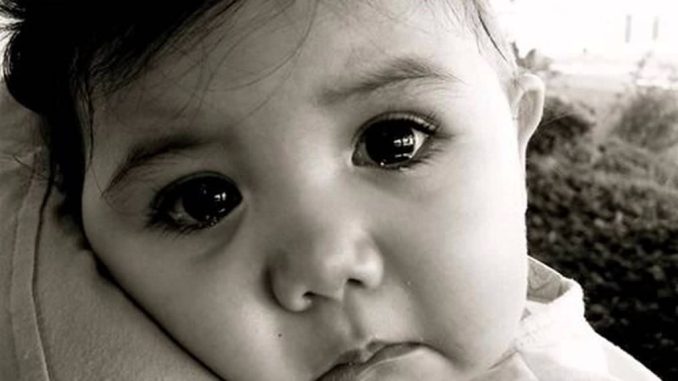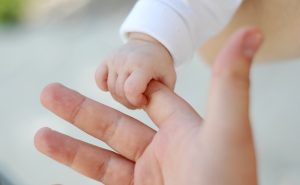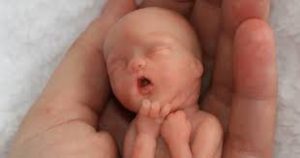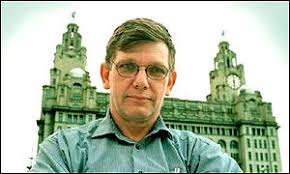
Murder itself is an atrocity, but
murdering babies
and
children
for transplant profits is a psychotic horror that any normal human being is sickened by.
The horrific killings of 19 children and women in the Indian slum of Nithari, close to the affluent area of Noida on the outskirts of India’s capital, Delhi, has brought into focus the horrific trade of human organ trafficking that is claiming the lives of thousands of children worldwide.
There is a huge demand and a market for body parts especially eyes, hearts and kidneys belonging to children.
Estimates indicate that at least one million children have been kidnapped and killed in the past 20 years for organs.
 A kidney or eyes can fetch up to US $10,000 and a heart could cost US $50,000 or more. Estimates further indicate that money laundering in this deadly trade accounts for up to 10% of the world’s GDP, or as much US $5 trillion.
A kidney or eyes can fetch up to US $10,000 and a heart could cost US $50,000 or more. Estimates further indicate that money laundering in this deadly trade accounts for up to 10% of the world’s GDP, or as much US $5 trillion.
As a result, the black market for children’s organs is expanding and more and more… children are kidnapped and killed.
While victims are primarily from Asia, Eastern Europe, the former Soviet Union, Latin America and Africa, trafficking also takes place in developed countries.
Those who take part in this trade make false promises about employment opportunities for the children and give money to the parents.
Children are also stolen from orphanages, or handed over through a fake adoption process and killed for their organs.
The intermediary may earn between US $50 and US $20, 000 per child according to the source countries. In many cases, impoverished parents are sometimes persuaded to sell their children’s organs for as little as US $500.
According to Dr Sam Vaknin, the Senior Business Correspondent for United Press International (UPI), a kidney fetches US $5000 in Turkey.
A kidney from an Indian or Iraqi child, however, would cost a mere US $2000. Such amounts are pitiful in
comparison to the thousands of dollars that wealthy individuals would pay for an organ.
 A recent report of a retired Italian couple, who had been arrested for buying a five year-old Albanian boy to provide organs for a
A recent report of a retired Italian couple, who had been arrested for buying a five year-old Albanian boy to provide organs for a
transplant
for their grandson and who paid US $6000 to the trafficking gang, is a clear indicator to this trade.
In Russia in late 2000, a grandmother was arrested for trying to sell her five-year-old grandson Andrei. With the help of the boy’s uncle, the child was handed over to a man in exchange for US $90,000 who would then take him to “the West,” where his kidneys and other organs would be removed and sold.
In 2001, Britain was also pressed by allegations of storing hearts, lungs, brains and other organs from children in hospitals.
A Dutch pathologist Dick Van Velzen at the Alder Hey Children’s Hospital in Liverpool had confessed to removing hundreds of thousands of organs from children’s bodies and storing them in hospitals all over the
country.
The doctor told the BBC program ‘Panorama’ that body parts from living children were given to a pharmaceutical company for research in return for financial donations following management’s instructions.
An inquiry by a British Medical Officer reported that in addition to over 2,000 hearts, there were a large number of brain parts, eyes taken from over 15,000 stillborn.
 Professor Van Velzen, who was sacked from a hospital in Canada where he faced similar charges also worked at a hospital in Holland.
Professor Van Velzen, who was sacked from a hospital in Canada where he faced similar charges also worked at a hospital in Holland.
In 2004, Israeli doctors were charged of harvesting organs from Palestinian children.
In a culture where everything can be bought for a price, it seems as if the children are the ones paying the ultimate price.
Human organ trafficking has become a particularly profitable international trade. International criminal organisations have identified the opportunity created by the large gap between organ supply and demand.
There are millions of affluent individuals who await organs such as the heart, lung, liver, pancreas, kidney and intestines for transplants.
An escalating global demand for transplant-able organs has been exacerbated by advances in pharmacology, better immune-suppressant drugs, and by improved medical transplant procedures.
Thanks to the progress of science, the human body has become a valuable source of raw materials. Blood, organs, tissue, bone, sperm, ova, corneas, skin, embryos and placenta now all have commercial value.
 A research team led by Nancy Scheper-Hughes, Professor of Anthropology at Berkeley and one of the founding members of Organ Watch, has conducted comprehensive field research into the global trafficking of human organs and
A research team led by Nancy Scheper-Hughes, Professor of Anthropology at Berkeley and one of the founding members of Organ Watch, has conducted comprehensive field research into the global trafficking of human organs and
documented the practices of organ harvesting in many parts of the world, notably Argentina, Brazil, Cuba, Israel, Turkey, South Africa, the United States, the United Kingdom and Asia.
This research shows that abuses range from the harvesting of organs from executed prisoners in China to the removal of organs from live and dead bodies in Argentina and South Africa without the permission and knowledge of
the families of the deceased.
Organ Watch has reported cases such as the charging of four American men in 1996 who illegally took bones and organs from over 1000 corpses. The men are said to have paid up to US $1000 per body to funeral home directors, with the bodies yielding up to US $250,000 dollars.
Dr. Crockett, an English kidney specialist, lost his license to practice medicine for life
in 1989 because he had organized a network to sell children in Turkey to India for kidney transplants.
An American lawyer was arrested in Peru in 2004, after having exported a total of three thousand children in thirty months to the United States and Italy for organ transplants.
Latin America, Mexico and Brazil where human organ trafficking has been practiced for decades have the worst proven record of abuses against children for organ transplants.
The first official exposure was in 1986 in the Altiplano and Tamaulipas areas and the suburbs of San Luis in Latin America when children began disappearing rapidly and then returned to their families several weeks later with one kidney missing.
 The probe disclosed that the children had been taken to clinics near the U.S border. A few years later, the police discovered several clandestine “nurseries” known as “casas de engorde” in Honduras. The children from here were illegally exported out of the country “for adoption.”
The probe disclosed that the children had been taken to clinics near the U.S border. A few years later, the police discovered several clandestine “nurseries” known as “casas de engorde” in Honduras. The children from here were illegally exported out of the country “for adoption.”
Investigations made a dramatic disclosure that the children were bought or stolen from poor families, and were sold for a minimum of $10,000 USD each to organizations in the United States to be used as organ donors.
In August 1988 the revelations of Judge Angel Campos in Asuncion, Paraguay in Brazil also attracted a lot of attention.
The police broke up an organization that was exporting children from Brazil in lieu of adoption.
The judge became wary about the fact that the children were being adopted by people “who did not seem to care whether the child walked with a limp, or had a harelip, or was born with a missing arm.”
An adoption scandal also broke out in Italy in 1999 when 4000 Brazilian children arrived in Italy for adoption in four years. One thousand of them were located, however the other three thousand had disappeared without a trace.
Two Italian judges, Angelo Gargani and Cesar Martinello went to Salvador de Bahia in Brazil. Upon their return, they warned the government that the Mafia was taking part in “human organ trafficking.” These children were sent to clandestine clinics in Mexico and Thailand, as well as in Europe where they were dissected for their organs.
The trade continues to flourish even today.
 During the Dirty War in Argentina in the late 1970s and early 1980s, children were stolen and killed as physicians often collaborated with the military state.
During the Dirty War in Argentina in the late 1970s and early 1980s, children were stolen and killed as physicians often collaborated with the military state.
Anthropologist Marcelo Suarez Orozco (1987) described in lurid detail the abuse of children during the Dirty War. Babies and small children were kidnapped and then returned to their families with organs missing.
In another case, in Ukraine, babies were stolen at birth and used for stem cell research. In 2005, media reports said that babies were taken from the mothers after delivery and parents were told that the babies had died after birth.
The trade, outlawed in all but a handful of countries, is legal and booming in Pakistan. According to a recent Pakistan Tribune report, frustrated by lengthy waiting lists at home and fearful of premature death, “transplant tourists,” from Europe, the US and the Middle East are flocking to private Pakistani hospitals for operations which can be arranged in a matter days at a fraction of the cost in their native countries.
In 2004, similar instances of kidnapping in Afghanistan also made headlines. Ali Ahmad Jalali, the Interior Minister had also said that hundreds of children had been taken out of the country illegally in recent years, and some had been kidnapped for their organs.
The murdering of these babies and children for profit is one of the sickest abominations men have ever committed.
They will answer for it… even if it is at the final judgement.


Be the first to comment